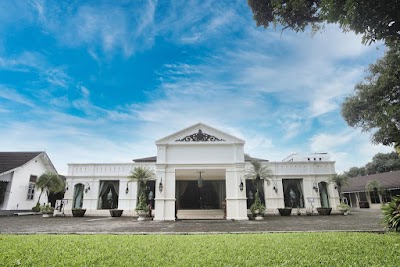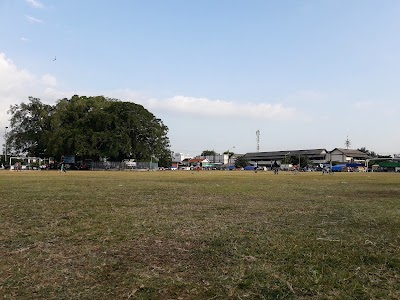Javanese Batik Museum (Museum Batik Jawa Tengah)
Related Places
Overview
The Javanese Batik Museum, nestled in the vibrant heart of Jawa Tengah, Indonesia, is a hidden gem for anyone fascinated by the intricate art of batik. This museum is not merely a collection of exquisite fabrics; it is a dynamic and interactive space where history, art, and culture seamlessly intertwine. As you step inside, you are transported to a world where each piece of cloth narrates a tale, and every pattern conveys a deep meaning.
The origins of batik date back thousands of years, with its true flourishing occurring in Indonesia, particularly on the island of Java. Established to preserve and celebrate this rich heritage, the Javanese Batik Museum showcases batik, recognized by UNESCO as a Masterpiece of Oral and Intangible Heritage of Humanity. This complex art form involves a meticulous wax-resist dyeing process applied to fabric, and the museum's extensive collection spans centuries, highlighting both traditional techniques and contemporary interpretations.
As you meander through the museum, an impressive array of batik from various regions of Java beckons. Each region boasts its own unique style and pattern. For instance, Lasem batik is celebrated for its vibrant reds and intricate Chinese influences, while the batiks from Solo and Yogyakarta are characterized by their muted tones and traditional symbolic patterns. The museum also emphasizes the cultural significance of batik in Javanese society, illustrating its role in traditional ceremonies as well as its impact on modern fashion.
One of the most captivating sections of the museum features interactive exhibits. Here, visitors can witness live demonstrations of the batik-making process, where artisans skillfully apply wax using canting tools or copper stamps before dyeing the fabric in vivid colors. This intricate dance of artistry and chemistry results in mesmerizing patterns. For those feeling inspired, the museum also offers workshops where you can try your hand at creating your own batik masterpiece. This hands-on experience not only deepens your appreciation for the craft but also allows you to take home a personal souvenir.
The museum delves into the historical significance of batik, revealing that certain designs were once reserved for the royal family and their courts, with specific patterns indicating social rank or status. An example is the Parang design, featuring diagonal rows of knife-like patterns, historically exclusive to royalty and now a symbol of power and nobility. Through these narratives, the museum paints a vivid picture of how batik is intertwined with Javanese identity and history.
In addition to its extensive collection and interactive exhibits, the Javanese Batik Museum hosts temporary exhibitions featuring works by contemporary batik artists from around the globe. These exhibitions provide insight into how batik has evolved over time and its influence on global textile art. Visiting during these events can offer a fresh and dynamic perspective on this traditional craft.
The museum is housed in a stunning colonial-era building, reflecting Indonesia's enduring legacy. Each room is thoughtfully curated, with batik pieces displayed alongside informative panels, creating an educational and visually stunning experience. This beautiful setting enhances the opportunity to absorb the artistry and cultural significance of batik.
No visit to the Javanese Batik Museum would be complete without stopping by the museum shop. Here, you can purchase authentic batik fabrics, clothing, and accessories crafted by local artisans. These unique items make for meaningful souvenirs, perfect for reminiscing about your visit or gifting to loved ones.
In conclusion, the Javanese Batik Museum is more than just a museum; it is a cultural journey through the heart of Java. It offers foreign tourists an insightful glimpse into the world of batik, from its historical roots and cultural significance to its modern-day relevance and artistic beauty. Whether you are an art lover, history enthusiast, or simply curious, a visit to this museum is sure to enrich your understanding of Indonesian culture and leave you with lasting memories.








